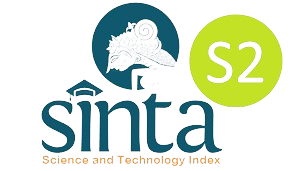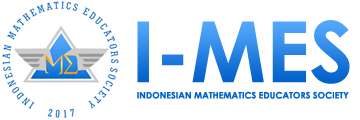Modeling the determinants of AI integration in primary mathematics education: A structural equation modeling analysis
DOI:
https://doi.org/10.29408/jel.v11i4.30518Keywords:
AI integration, elementary mathematics, teacher readiness, TPACK, educational environmentAbstract
This study addresses a critical gap in educational technology research by simultaneously examining the internal and external determinants of Artificial Intelligence (AI) integration in primary mathematics instruction. Using a second-order Structural Equation Modeling (SEM) framework, the study investigates how teachers’ attitudes and TPACK competencies (internal factors), alongside policy support, infrastructure, and community engagement (external factors), influence AI utilization among 516 primary school mathematics teachers in Jakarta, Indonesia. The results reveal that internal factors have a strong direct effect on AI utilization (β = 0.791; p < 0.001), while external factors exert a significant indirect influence via internal mediators (β = 0.217; p < 0.001), despite an insignificant direct effect (β = 0.008; p = 0.908). The model explains 78.1% of the variance in AI utilization (R² = 0.781) and shows high predictive relevance (Q² > 0.70). These findings underscore the pivotal role of teacher readiness in AI integration, with systemic support enhancing its effectiveness through internal capacity-building. The study contributes an empirically validated instrument and a comprehensive ecological model, offering actionable insights for policymakers and educators in developing nations pursuing ethical, equitable, and sustainable AI integration in primary education.
References
Ahmad, S. F., Rahmat, M. K., Mubarik, M. S., Alam, M. M., & Hyder, S. I. (2021). Artificial intelligence and its role in education. Sustainability, 13(22), 12902. https://doi.org/10.3390/su132212902
Annuš, N., & Kmeť, T. (2024). Learn with me. Let us boost personalized learning in K-12 math education! Education Sciences, 14(7), 773–1003. https://doi.org/10.3390/educsci14070773
Antonenko, P., & Abramowitz, B. (2023). In-service teachers’ (mis) conceptions of artificial intelligence in K-12 science education. Journal of Research on Technology in Education, 55(1), 64–78. https://doi.org/10.1080/15391523.2022.2119450
Azhar, N. A., Mohd Pozi, M. S., Mohamed Din, A., & Jatowt, A. (2022). An investigation of Smote-based methods for imbalanced datasets with data complexity analysis. IEEE Transactions on Knowledge and Data Engineering, 1–1. https://doi.org/10.1109/TKDE.2022.3179381
Bibri, S. E., & Allam, Z. (2022). The Metaverse as a virtual form of data-driven smart cities: the ethics of the hyper-connectivity, datafication, algorithmization, and platformization of urban society. Computational Urban Science, 2(1), 22. https://doi.org/10.1007/s43762-022-00050-1
Bronfenbrenner, U. (1986). Ecology of the family as a context for human development: Research perspectives. Developmental Psychology, 22(6), 723–742. https://doi.org/10.1037/0012-1649.22.6.723
Celik, I. (2023). Towards intelligent-TPACK: an empirical study on teachers’ professional knowledge to ethically integrate artificial intelligence (AI)-based tools into education. Computers in Human Behavior, 138, 107468. https://doi.org/10.1016/j.chb.2022.107468
Chen, X. (2020). Fifty years of British Journal of educational technology: a topic modeling based bibliometric perspective. British Journal of Educational Technology, 51(ue 3), 692–708. https://doi.org/10.1111/bjet.12907
Davis, F. D., & Granić, A. (2024). The technology acceptance model: 30 years of TAM (1st ed.). Springer Cham. https://doi.org/10.1007/978-3-030-45274-2
El Hajj, M., & Harb, H. (2023). Rethinking education: an in-depth examination of modern technologies and pedagogic recommendations. IAFOR Journal of Education, 11(2), 97–113. https://doi.org/10.22492/ije.11.2.05
Flores-Vivar, J. M., & García-Peñalvo, F. J. (2023). Reflections on the ethics, potential, and challenges of artificial intelligence in the framework of quality education (SDG4. Comunicar, 31(74), 37–47. https://doi.org/10.3916/C74-2023-03
Gadanidis, G. (2017). Artificial intelligence, computational thinking, and mathematics education. The International Journal of Information and Learning Technology, 34(2), 133–139. https://doi.org/10.1108/IJILT-09-2016-0048
Gagne, J. C., Koppel, P. D., Kim, S. S., Park, H. K., & Rushton, S. (2021). Pedagogical foundations of cybercivility in health professions education: a scoping review. BMC Medical Education, 21(1). https://doi.org/10.1186/s12909-021-02507-z
Guo, C., & Wan, B. (2022). The digital divide in online learning in China during the COVID-19 pandemic. Technology in Society, 71, 102122. https://doi.org/10.1016/j.techsoc.2022.102122
Hair, J., & Alamer, A. (2022). Partial least squares structural equation modeling (PLS-SEM) in second language and education research: guidelines using an applied example. Research Methods in Applied Linguistics, 1(3), 100027. https://doi.org/10.1016/j.rmal.2022.100027
Hwang, G. J., & Tu, Y. F. (2021). Roles and research trends of artificial intelligence in mathematics education: a bibliometric mapping analysis and systematic review. Mathematics, 9(6), 584. https://doi.org/10.3390/math9060584
Jia, J., Wu, G., & Qiu, W. (2022). pSuc-FFSEA: Predicting lysine succinylation sites in proteins based on feature fusion and stacking ensemble algorithm. Frontiers in Cell and Developmental Biology, 10. https://doi.org/10.3389/fcell.2022.894874
Khong, H., Celik, I., Le, T. T. T., Lai, V. T. T., Nguyen, A., & Bui, H. (2023). Examining teachers’ behavioural intention for online teaching after the COVID-19 pandemic: A large-scale survey. Education and Information Technologies, 28(5), 5999–6026. https://doi.org/10.1007/s10639-022-11417-6
Khosravi, H., Denny, P., Moore, S., & Stamper, J. (2023). Learnersourcing in the age of AI: Student, educator, and machine partnerships for content creation. Computers and Education: Artificial Intelligence, 5, 100151. https://doi.org/10.1016/j.caeai.2023.100151
Li, L., Wu, X., Kong, M., Liu, J., & Zhang, J. (2024). Quantitatively interpreting residents' happiness prediction by considering factor-factor interactions. IEEE Transactions on Computational Social Systems, 11(1), 1402–1414. https://doi.org/10.1109/TCSS.2023.3246181
Ma, Y., Fairlie, R., Loyalka, P., & Rozelle, S. (2024). Isolating the “tech” from edtech: experimental evidence on computer-assisted learning in China. Economic Development and Cultural Change, 72(4), 1923–1962. https://doi.org/10.1086/726064
Mishra, P., Warr, M., & Islam, R. (2023). TPACK in the age of ChatGPT and generative AI. Journal of Digital Learning in Teacher Education, 39(4), 235–251. https://doi.org/10.1080/21532974.2023.2247480
Ng, K. K. H., Chen, C. H., Lee, C. K. M., Jiao, J. R., & Yang, Z. X. (2021). A systematic literature review on intelligent automation: Aligning concepts from theory, practice, and future perspectives. Advanced Engineering Informatics, 47. https://doi.org/10.1016/j.aei.2021.101246
Ng, S. F., Dawie, D. D. S. A., Chong, W. W., Jamal, J. A. J. I., Rahman, S. N. A. A., & Jamal, J. A. J. I. (2021). Pharmacy student experience, preference, and perceptions of gaming and game-based learning. Currents in Pharmacy Teaching and Learning. https://doi.org/10.1016/j.cptl.2021.01.019
Olmo-Muñoz, J., González-Calero, J. A., Diago, P. D., Arnau, D., & Arevalillo-Herráez, M. (2023). Intelligent tutoring systems for word problem solving in COVID-19 days: could they have been (part of) the solution? ZDM – Mathematics Education, 55(1), 35–48. https://doi.org/10.1007/s11858-022-01396-w
Pineda-Martínez, M., Llanos-Ruiz, D., Puente-Torre, P., & García-Delgado, M. Á. (2023). Impact of video games, gamification, and game-based learning on sustainability education in higher education. Sustainability, 15(17), 13032. https://doi.org/10.3390/su151713032
Rahimi, F. B., & Kim, B. (2021). Learning through redesigning a game in the STEM Classroom. Simulation and Gaming, 52(6), 753–774. https://doi.org/10.1177/10468781211039260
Reuter, J., Dias, M. F., Sousa, M. J., Soobhany, A. R., & Hendi, A. (2022, 2022). Unlock financial knowledge in managers through games Proceedings of the European Conference on Games-based Learning, https://www.scopus.com/inward/record.uri?eid=2-s2.0-85141142319&partnerID=40&md5=47585aa6991b221db29f248163131642
Sanabria-Navarro, J. R., Silveira-Pérez, Y., Pérez-Bravo, D. D., & De-Jesús-Cortina-Núñez, M. (2023). Incidences of artificial intelligence in contemporary education. Comunicar, 31(77). https://doi.org/10.3916/C77-2023-08
Scherer, R., & Siddiq, F. (2019). The relation between students’ socioeconomic status and ICT literacy: Findings from a meta-analysis. Computers & Education, 138, 13–32. https://doi.org/10.1016/j.compedu.2019.04.011
Sun, W., & Chen, Q. (2023, 2023). The design, implementation, and evaluation of gamified immersive Virtual Reality (VR) for learning: a review of empirical studies Proceedings of the European Conference on Games-based Learning, http://dx.doi.org/10.34190/ecgbl.17.1.1619
Sutrisman, H., Simanjuntak, R., Prihartanto, A., & Kusumo, B. (2024). The impact of using AI in learning on the understanding of material by young students. International Journal of Educational Research, 1(3), 24–32. https://doi.org/10.62951/ijer.v1i3.43
Tang, Y., Franzwa, C., Bielefeldt, T., Jahan, K., Saeedi-Hosseiny, M. S., Lamb, N., & Sun, S. (2022). Sustain city: Effective serious game design in promoting science and engineering education. In Research Anthology on Game Design, Development, Usage, and Social Impact (pp. 914–943). https://doi.org/10.4018/978-1-6684-7589-8.ch044
Tong, P., & An, I. S. (2024). Review of studies applying Bronfenbrenner's bioecological theory in international and intercultural education research. Frontiers in Psychology, 14, 1233925. https://doi.org/10.3389/fpsyg.2023.1233925
Walter, Y. (2024). Embracing the future of artificial intelligence in the classroom: the relevance of AI literacy, prompt engineering, and critical thinking in modern education. International Journal of Educational Technology in Higher Education, 21(1), 15. https://doi.org/10.1186/s41239-024-00448-3
Wei, L., Aun, N. S. M., Ibrahim, F., & Rajaratnam, S. (2024). Work overload and burnout among Chinese social workers during and post-COVID-19: the impact of organizational support and professional identity. Environment and Social Psychology, 9(9), 1–9. https://doi.org/10.59429/esp.v9i9.2814
Ye, L., Ismail, H. H., & Aziz, A. A. (2024). Innovative strategies for TPACK development in pre-service english teacher education in the 21st century: a systematic review. Forum for Linguistic Studies, 6(6), 274–294. https://doi.org/10.30564/fls.v6i6.7308
Yue, M., Jong, M. S. Y., & Ng, D. T. K. (2024). Understanding K–12 teachers’ technological pedagogical content knowledge readiness and attitudes toward artificial intelligence education. Education and Information Technologies, 29(15), 19505–19536. https://doi.org/10.1007/s10639-024-12621-2
Zhao, W. (2024). A study of the impact of the new digital divide on the ICT competences of rural and urban secondary school teachers in China. Heliyon, 10(7), 29186. https://doi.org/10.1016/j.heliyon.2024.e29186
Downloads
Published
How to Cite
Issue
Section
License
Copyright (c) 2025 Dwi Yulianto, Egi Adha Juniawan, Yusup Junaedi, Astari, Rahmat Nurcahyo

This work is licensed under a Creative Commons Attribution-ShareAlike 4.0 International License.
Authors who publish with the Jurnal Elemen agree to the following terms:
- Authors retain copyright and grant the journal right of first publication with the work simultaneously licensed under Creative Commons Attribution-ShareAlike 4.0 International License (CC BY-SA 4.0).
- Authors are able to enter into separate, additional contractual arrangements for the distribution of the journal's published version of the work (e.g., post it to an institutional repository or publish it in a book), with an acknowledgment of its initial publication in this journal.
- Authors are permitted and encouraged to post their work online (e.g., in institutional repositories or on their website) prior to and during the submission process, as it can lead to productive exchanges, as well as earlier and greater citation of published work.
Jurnal Elemen is licensed under a Creative Commons Attribution-ShareAlike 4.0 International License





